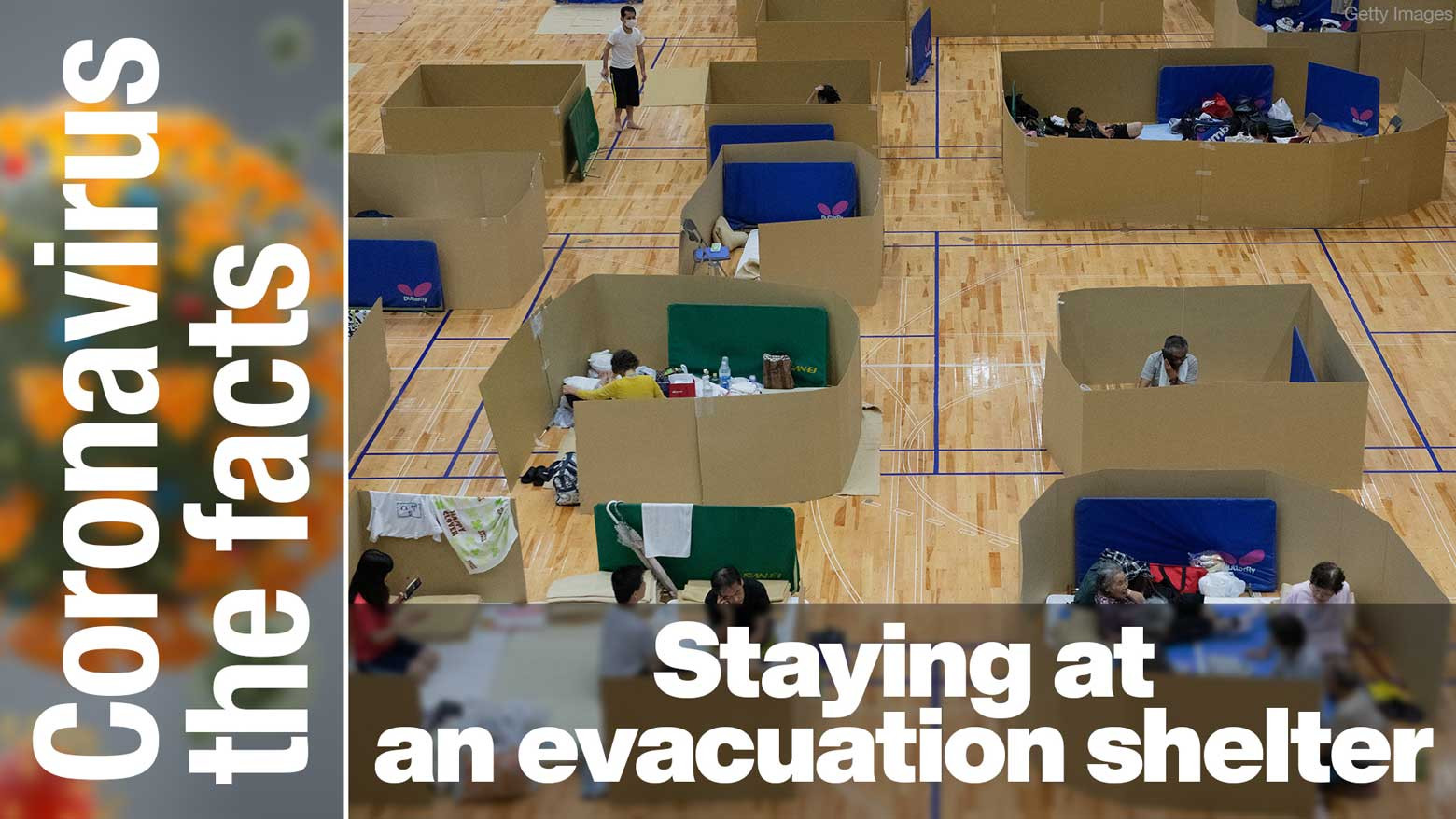This is part 32 of our coronavirus FAQ. Click here to read other installments: #Coronavirus the facts. Find the latest information and answers from experts on everything COVID-19.
Avoid the “Three Cs”
If a disaster hits and you have to evacuate to a shelter, make it a top priority to avoid the “Three Cs” -- closed places, crowded areas and conversations in close proximity. This means try to keep the space you’re in well ventilated, maintain a physical distance of about two meters from others and avoid conversation with people close by.
A good way to keep distance in a cramped space is by sitting back to back instead of face to face, and by setting up cardboard partitions. These measures can help keep droplets generated by coughing and sneezing from reaching others.
Regularly wash your hands and check your condition
Another way to help stay safe is by washing and disinfecting your hands. Make sure you wash your hands or disinfect them with an alcohol-based disinfectant before eating and after using the bathroom. Do the same after you touch something that many people may have touched, such as doorknobs or handrails.
Be sure also to take your temperature and regularly check in on your condition. For everyone’s safety, you should let staff at the shelter know if you are feeling unwell.
Past natural disasters in Japan show infections spread in shelters
Infections tend to spread quickly inside shelters during times of disaster. Following the 2011 Great East Japan Earthquake and tsunami, dozens of people caught influenza at a shelter in Iwate Prefecture. After the 2016 earthquakes in Kumamoto Prefecture, some people in shelters contracted influenza and norovirus.
Droplets often stay in the air close to the floor
To help find out why, NHK conducted an experiment under the supervision of professor Sekine Yoshika at Tokai University, a specialist in indoor environments. We simulated a closed space with no ventilation, such as an emergency shelter, and looked at how droplets generated by sneezing and coughing spread.
We used a special device to create droplets roughly equivalent to one bout of sneezing and captured the effects with high-definition cameras.
The video showed that most droplets fell onto an area of the floor about 1.5 meters away. It also showed that dust attached to droplets lifted up and floated in the air when people walked by. When the air was stirred by a sneeze or cough, contaminated dust on the floor was blown up about 20 centimeters into the air.
Sekine notes some scientists report that the coronavirus can survive for a long time, especially on a hard surface with little friction, such as the gym floors often found in evacuation shelters. He says it is important to take preventative measures when using such facilities.
Keep distance from the floor
Professor Kanbara Sakiko of the University of Kochi specializes in measures to prevent infectious diseases at emergency shelters. She warns that sleeping directly on the floor in a shelter with many people can increase the risk of infection. She says makeshift beds, that are made of cardboards for example, that keep people off the floor can be a useful preventative measure.
For your reference:
